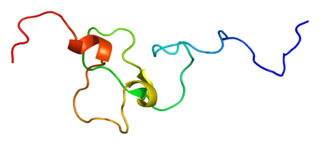
The Shuowen Jiezi is a Chinese dictionary compiled by Xu Shen c. 100 CE, during the Eastern Han dynasty. While prefigured by earlier Chinese character reference works like the Erya, the Shuowen Jiezi featured the first comprehensive analysis of characters in terms of their structure, and attempted to provide a rationale for their construction. It was also the first to organize its entries into sections according to shared components called radicals.

Xu Shen was a Chinese calligrapher, philologist, politician, and writer of the Eastern Han dynasty. During his own lifetime, Xu was recognized as a preeminent scholar of the Five Classics. He was the author of Shuowen Jiezi, which was the first comprehensive dictionary of Chinese characters, as well as the first to organize entries by radical. This work continues to provide scholars with information on the development and historical usage of Chinese characters. Xu Shen completed his first draft in 100 CE but, waited until 121 CE before having his son present the work to the Emperor An of Han.

Xuchang is a prefecture-level city in central Henan province in Central China. It is bordered by the provincial capital of Zhengzhou to the northwest, Kaifeng to the northeast, Zhoukou to the east, Luohe to the southeast, and Pingdingshan to the southwest.

Dilong is a genus of basal tyrannosauroid dinosaur. The only species in this genus is Dilong paradoxus. It is from the Lower Cretaceous Yixian Formation near Lujiatun, Beipiao, in the western Liaoning province of China. It lived about 126 million years ago. This theropod discovery was significant as it was one of the first tyrannosauroids with fossil evidence of simple feathers.

Beipiaosaurus is a genus of therizinosauroid theropod dinosaurs that lived in Asia during the Early Cretaceous in the Yixian Formation. The first remains were found in 1996 and formally described in 1999. Before the discovery of Yutyrannus, Beipiaosaurus were among the heaviest dinosaurs known from direct evidence to be feathered. Beipiaosaurus is known from three reported specimens. Numerous impressions of feather structures were preserved that allowed researchers to determine the feathering color which turned out to be brownish.
Uranium (92U) is a naturally occurring radioactive element that has no stable isotope. It has two primordial isotopes, uranium-238 and uranium-235, that have long half-lives and are found in appreciable quantity in the Earth's crust. The decay product uranium-234 is also found. Other isotopes such as uranium-233 have been produced in breeder reactors. In addition to isotopes found in nature or nuclear reactors, many isotopes with far shorter half-lives have been produced, ranging from 214U to 242U. The standard atomic weight of natural uranium is 238.02891(3).
Xue Xu was a Chinese military general and politician of the state of Eastern Wu during the Three Kingdoms period of China.

Lithium hexafluorophosphate is an inorganic compound with the formula LiPF6. It is a white crystalline powder.

Luanchuanraptor is a genus of dromaeosaurid theropod dinosaurs from the Late Cretaceous of China. The genus is based on a partial skeleton from the Qiupa Formation in Luanchuan, Henan. They were medium-sized dromaeosaurids, the first Asian dromaeosaurid taxa described from outside the Gobi Desert or northeastern China.

Homeobox protein SIX1 is a protein that in humans is encoded by the SIX1 gene.

Inhibitor of growth protein 4 is a protein that in humans is encoded by the ING4 gene.

Transcription factor AP-2 delta , also known as TFAP2D, is a human gene. The protein encoded by this gene is a transcription factor.
Xu Xing was a Chinese philosopher and one of the most notable advocates of the egalitarian political philosophy of agriculturalism. With a group of followers he settled in the state of Teng in about 315 BC. A disciple of his visited the Confucian philosopher Mencius, and a short report of their conversation discussing Xu Xing's philosophy survives.

Aorun is a genus of carnivorous theropod dinosaur first discovered in 2006, with its scientific description published in 2013. It is one of the oldest known coelurosaurian dinosaurs and is estimated to have lived ~161.6 million years ago during the Late Jurassic Period. It is the fifth extinct theropod discovered from Wucaiwan, China.

Xu is a Chinese-language surname. In the Wade-Giles system of romanization, it is spelled as "Hsu", which is commonly used in Taiwan or overseas Chinese communities. It is different from Xu, represented by a different character.

Xu is a Chinese-language surname. In the Wade-Giles system of romanization, it is romanized as "Hsu", which is commonly used in Taiwan. It is different from Xu, which is represented by a different character.
Qiupanykus is a genus of alvarezsaurid coelurosaur theropod from the Late Cretaceous Qiupa Formation of southern China.
Alteriqipengyuania halimionae is a Gram-negative, rod-shaped and motile bacterium from the genus Alteriqipengyuania which has been isolated from the plant Halimione portulacoides.
Ruixinia is an extinct genus of somphospondylan titanosauriform dinosaur from the Early Cretaceous (Barremian) Yixian Formation of China. The genus contains a single species, Ruixinia zhangi. The Ruixinia holotype is a partial articulated skeleton with the most complete series of caudal vertebrae known from any Asian titanosauriform.












